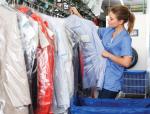CHICAGO — While the lessons and successful practices of the past should certainly be remembers and used, businesses evolve because the needs of the clients they serve change. This is certainly true for the drycleaning industry. Successful cleaners know that they have to adapt to changing economic and demographic realities in order to thrive.
In Part 1 of this series, we explored the changing shape of dry cleaning in today’s market and how the pandemic and changing customer needs and demands have forced some cleaners to reassess their business model. Today, we’ll dive into some areas that many cleaners are using to better connect with their customers — along with some areas that might have seen better days.
What’s Working for Successful Cleaners Today?
Successful cleaners going into 2024 have had to keep an eye on what services their customers are using — and are prepared to adjust their offerings if they see that picture change.
“Besides wash and fold, household comforters, throw blankets and related items have been a really solid, steady area in the industry,” says Bob Barry, president and CEO of the ZIPS Cleaners network of drycleaning stores. “During the pandemic, I think people were eager to get their bedding, blankets and other items clean more often in their household.”
“There has been a large upside to working with local Airbnb and Vrbo management companies in vacation destinations,” says Christopher White, executive director of the consulting firm America’s Best Cleaners (ABC).
“We’ve got more operators who have begun marketing higher-end services, including couture services, rug cleaning, home cleaning, patio cushion cleaning and shoe care,” says Kermit Engh, owner of Fashion Cleaners in Omaha, Nebraska, and the managing partner of Methods for Management (MfM), a consulting firm for the drycleaning industry.
“Another area we saw a gain in is alterations,” Barry says. “I think that people are home more often, and many grew a bit larger, or went the other way and said, ‘I’m going to get in shape.’ Either way, we saw a nice spike in alterations. People also found older clothes while they were going through their closets that needed alterations or a bit of repair.”
The very nature of customers coming to dry cleaners has also been in flux, says White: “Business-to-business contract work is growing as many of the large industrial laundry operations, with all the consolidation we’re seeing in that space, no longer see profits in boutique-level work for restaurants and hotels. We’ve seen some traction there.”
“We also saw a lot of interest in the commercial side that we weren’t really involved in before,” Barry says. “Business-to-business has proven to be a good stream of incremental volume for us. Day spas, for instance, will reach out to our franchisees to clean towels for them. They could do them themselves, but they feel we’re going to sanitize them better, so that’s another area where we’ve seen a spike.”
What’s Not Working for Successful Cleaners Today?
Engh believes some of the steadiest drycleaning business of the past will not be going forward.
“In the old days, the drycleaning pieces and shirt pieces for most operators were about even,” he says, “and on the drycleaning side, about 50% of your pieces were pants. I’m seeing that change. Pants are not 50% anymore — they’re lower than that — and I’m seeing that shirts no longer make up the same number of pieces as dry cleaning for many operators. So those have changed quite a bit.”
Barry has seen that same change in his stores: “The biggest change we’ve seen is in pressing shirts and blouses. We’ve seen a decline in the last couple of years in that category because people are wearing more casual attire. When you would see our racks in the past, they used to be full of button-down dress shirts and blouses. “
“The traditional drycleaning and shirt laundry segments, I believe, are never going to come back to the levels that they were,” Engh says. “I think there are still some operators out there who believe that laundered shirts should be a loss leader. I’ve never accepted that, but shirts are not anywhere near the volumes that they used to be.”
Many dry cleaners have changed their business models to make more efficient use of their physical locations — or have changed that element in their playbook entirely.
“Purely brick-and-mortar models, without complementary home-pickup-and-delivery service offerings, have faced challenges,” White says, “especially with the growth of remote work and changing consumer behaviors. The clients with strong brick-and-mortar growth have been with those who have installed kiosk or locker services. These technologies have also eased the staffing needs of these locations.”
Engh has witnessed this effect among MfM members, as well.
“From a business model standpoint, I’m not seeing as many new store openings,” he says. “In fact, many operators reduced their brick-and-mortar footprint during COVID and are not going back.”
Offering customers the convenience of accessing their services at any time is also proving to have dramatic results for some ABC members, White says.
“Our affiliates who have put kiosks in are seeing new customer growth at ridiculous rates I’ve never ever seen before,” he explains. “I have one who’s seen 40% growth month-over-month, and all they did was put in a kiosk. That’s addressing new customer growth.”
Come back Tuesday for the conclusion of this series, where we’ll examine options when it comes to pivoting, and the mindset for success. For Part 1, click HERE.
Have a question or comment? E-mail our editor Dave Davis at [email protected].



































































